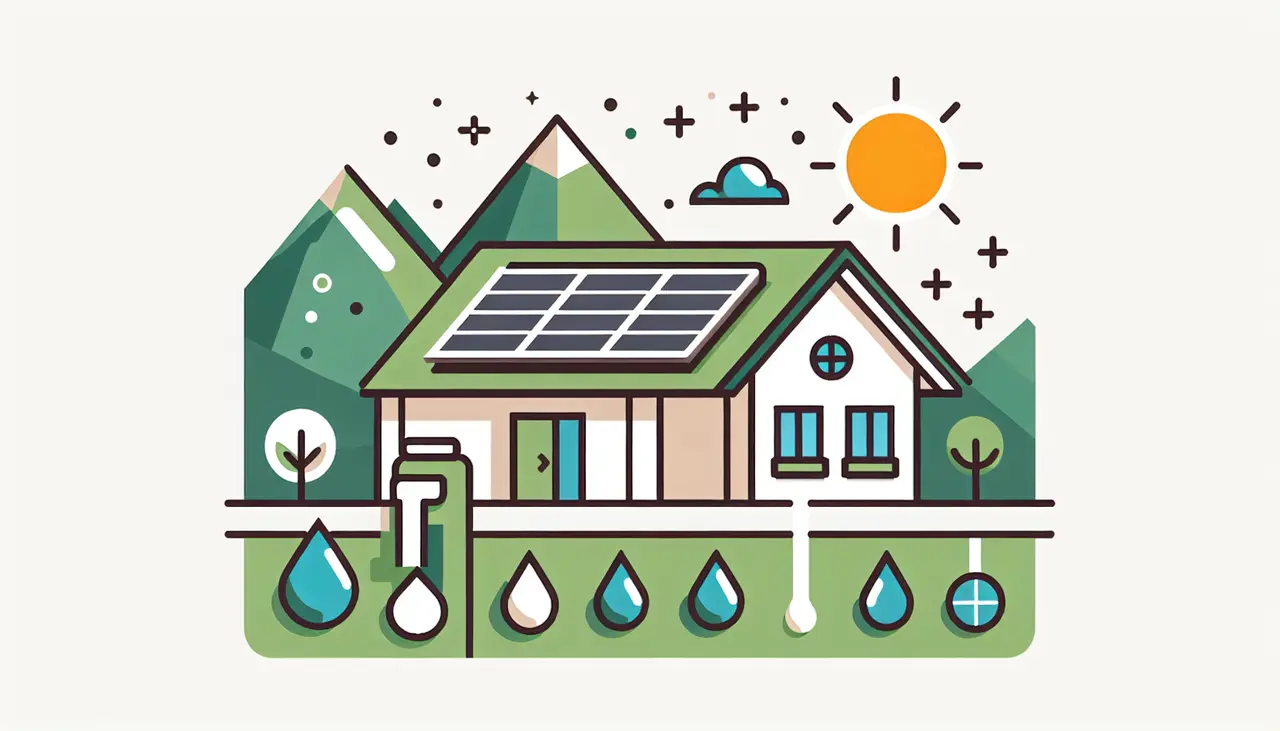Nestled in the heart of natural beauty, the Hill Country presents a unique canvas for homeowners to blend sustainability with elegance. This guide plunges into the world of sustainable roofing, offering eco-friendly solutions that harmonize with the rolling landscapes while providing efficiency and durability. From innovative materials to energy-efficient designs, explore how your home can contribute to a greener tomorrow.
Understanding Sustainable Roofing
Sustainable roofing goes beyond merely selecting environmentally friendly materials; it encapsulates a holistic approach to building and renovating homes. In the idyllic Hill Country, where the natural landscape plays a significant role in the local aesthetic, sustainable roofing options offer a way to reduce environmental impact without sacrificing style or durability. These roofing systems are designed to be energy-efficient, have a minimal carbon footprint, and are made from recycled or recyclable materials wherever possible, providing an eco-conscious alternative for homeowners.
Moreover, understanding the nuances of sustainable roofing involves recognizing how these practices contribute to rainwater management and enhance living comfort. By optimizing for energy efficiency, such roofs can significantly reduce heating and cooling costs, reflecting sunlight and insulating homes effectively. This dual focus on functionality and sustainability underscores the importance of educated choices in roofing materials and designs, especially in regions like the Hill Country where weather patterns and architecture command special consideration.
Additionally, the integration of green roofs, which are covered with vegetation, brings a slice of nature right to your doorstep. Not only do they provide exceptional insulation and absorb rainwater, but they also help blend man-made structures into the Hill Country’s natural beauty. The journey towards sustainable roofing is both an environmental commitment and a way to enhance the quality of life through thoughtful design.
Benefits of Choosing Sustainable Roofing for Your Home
Opting for sustainable roofing solutions in the Hill Country extends benefits well beyond the immediate environmental impact. First and foremost, these materials often feature superior durability compared to traditional options. Materials like metal roofing, recycled content shingles, and clay tiles can withstand harsh weather conditions while maintaining their integrity over time. This resilience translates into less frequent replacements, reducing the demand for raw materials and the energy consumption associated with manufacturing and installation processes.
Energy efficiency is another hallmark of sustainable roofing. With the Hill Country experiencing a warm climate, reflective roofing materials can lead to significant savings on cooling costs. By deflecting sunlight rather than absorbing it, these roofs help maintain cooler interior temperatures, lessening the need for air conditioning and thereby reducing energy consumption. Green roofs also contribute to this effect, adding a layer of insulation that helps regulate indoor temperatures year-round.
Common Sustainable Roofing Materials in the Hill Country
Exploring the panorama of sustainable roofing materials suited for the Hill Country reveals a variety of options. Metal roofing stands out for its durability, energy efficiency, and recyclability. Available in a wide range of colors and styles, it complements both contemporary and traditional architectures while reflecting heat to reduce cooling costs. Clay and concrete tiles offer another eco-friendly choice, known for their longevity and ability to withstand the Hill Country’s variable weather, from intense sun to occasional heavy rains.
For those seeking a more organic look, wooden shakes and shingles made from sustainably harvested or recycled wood provide a natural aesthetic that ages beautifully. Though requiring more maintenance, they offer unique character and insulation properties. Alternatively, recycled content shingles, crafted from post-consumer waste like rubber or plastic, present a durable and environmentally conscious roofing solution, embodying the principles of sustainability by diverting waste from landfills.
Evaluating the Cost and Longevity of Sustainable Roofing Options
Navigating the cost considerations of sustainable roofing in the Hill Country involves a long-term perspective. While initial expenses for materials like metal, clay tiles, or green roofs might surpass those of traditional shingles, the longevity and energy savings associated with these choices often present a favorable cost-benefit analysis over time. Metal roofs, for example, can last up to 50 years or more with minimal maintenance, offering a sound investment when weighed against the frequent replacements required for asphalt shingles.
Moreover, evaluating the life cycle cost of sustainable roofing includes factoring in potential energy savings. Reflective and green roofs can significantly lower air conditioning costs during hot Hill Country summers, with savings that accumulate each year. Additionally, some sustainable roofing materials may qualify homeowners for rebates or tax credits, further offsetting initial costs and underscoring the financial viability of environmentally friendly choices.
Incorporating Solar Panels with Sustainable Roofing
Pairing solar panel technology with sustainable roofing amplifies the environmental benefits and energy savings for Hill Country homes. Solar panels harness the abundant sunlight characteristic of the region, converting it into clean electricity and drastically reducing reliance on fossil fuels. When integrated with sustainable roofing materials like metal or flat roofs adapted for green coverage, solar panels contribute to a holistic eco-conscious home design.
Furthermore, the aesthetic integration of solar technology with roofing design has evolved, offering sleek, low-profile panels that blend seamlessly with the roofline. This harmony between form and function enhances the curb appeal of sustainable homes, marrying the Hill Country’s rustic beauty with modern innovation. Homeowners considering solar panels should consult with roofing professionals to ensure their chosen materials are compatible and optimized for solar installation, reinforcing the synergy between sustainable roofing and renewable energy generation.
Navigating Local Climate and Architecture
The success of sustainable roofing in the Hill Country heavily relies on understanding and respecting the local climate and architectural styles. The region’s hot summers and occasional heavy rains demand materials and designs that provide excellent thermal performance and water resistance. For example, metal roofs and clay tiles are particularly effective in reflecting sunlight and shedding rainwater, preventing heat accumulation and water penetration.
Moreover, incorporating sustainable roofing must also consider the Hill Country’s distinctive architectural heritage. Materials and designs should complement the natural stone, wood, and stucco that characterize many of the area’s homes, ensuring that new or renovated roofs enhance rather than detract from the region’s aesthetic. Working with knowledgeable contractors who understand these nuances can guide homeowners toward choices that respect and elevate local traditions while advancing sustainability.
Choosing the Right Contractor for Sustainable Roofing Installation
Selecting a contractor with expertise in sustainable roofing is paramount for homeowners in the Hill Country. The right professional not only ensures the quality installation of materials but also provides invaluable guidance on the best eco-friendly options for the specific climate and architectural style of the area. A reputable contractor will have a portfolio of successful sustainable roofing projects and be up-to-date with the latest green technologies and materials.
Questions to ask potential contractors should cover their experience with installing solar panels, green roofs, or other sustainable materials of interest. Additionally, verifying certifications and asking for references can offer peace of mind that the contractor is committed to quality and sustainability. Ultimately, the partnership between homeowners and knowledgeable contractors is key to achieving a roof that is not only environmentally responsible but also beautifully integrated into the Hill Country landscape.
Reflecting on Sustainability
Embracing sustainable roofing in the Hill Country not only aligns with the environmental ethos of the area but also invests in the longevity and efficiency of your home. As we’ve explored various materials, costs, and the integration of technology like solar panels, it’s clear that going green with your roofing is a multifaceted decision. It involves understanding local climate, architecture, and finding the right contractor. By making informed choices, homeowners can ensure their roofing is not just sustainable but also beautifully integrated into the Hill Country’s distinctive aesthetic.







